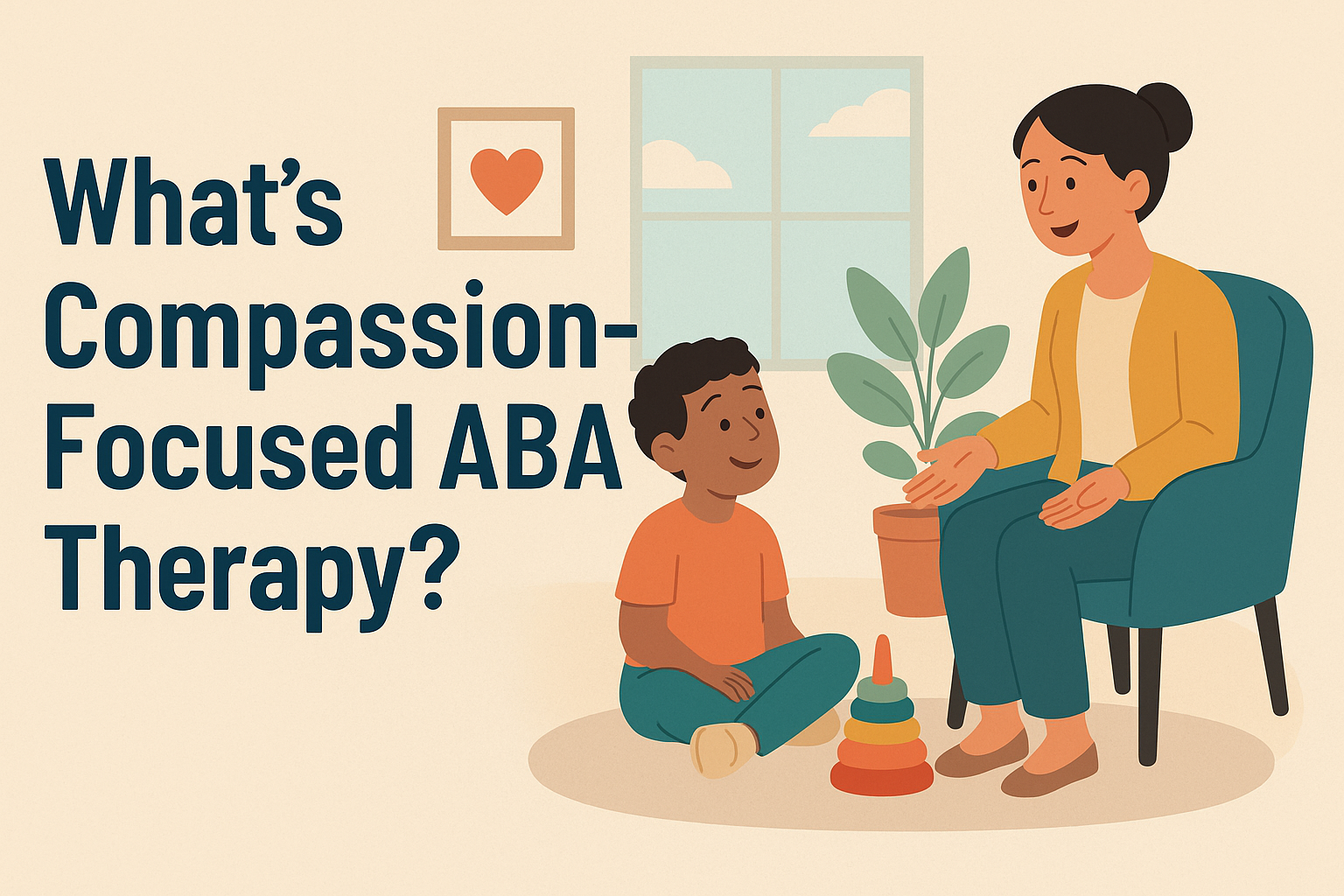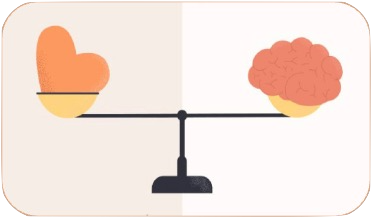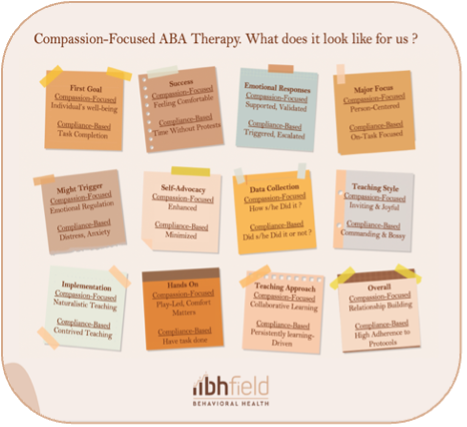HB Field
Dana Urgelles •
August 20, 2025
What’s Compassion-Focused ABA Therapy
Compassion ABA Therapy
ASD Compassion

What’s Compassion-Focused ABA Therapy
Introduction
Compassion-Focused ABA Therapy is an approach to Applied Behavior Analysis (ABA) that blends the evidence-based methods of ABA with principles from Compassion-Focused Therapy (CFT) and other human-centered care models. Compassion-Focused ABA is still ABA, but with a strong lens on kindness, emotional safety, and collaborative learning, making sure therapy feels supportive rather than controlling.

Overview of Compassion-Focused ABA Therapy
Core ABA principles remain:
The goal is to help the individual learn skills, reduce harmful behaviors, and increase quality of life, with feelings and emotions in mind, where inviting always goes on top of commanding. Compassion-Focused ABA Therapy at BH Field is a human-centered approach. It still uses behavioral assessment, data collection, reinforcement strategies, and skill-building.
Compassion as the guiding value:
Interventions are designed and delivered with the explicit aim of protecting dignity, reducing distress, and fostering trust. The therapist focuses on why behaviors occur, not just stopping them. Empathy and rapport are prioritized to build a safe and respectful relationship.
Trauma-informed and person-centered:
Adapts teaching to avoid unnecessary stress, using choices, collaboration, and gentle prompting. Reinforcement is tailored so it feels motivating, not controlling. Recognizes that some autistic individuals receiving ABA may have experienced previous therapy as coercive or overwhelming.
Self-compassion and emotional regulation skills:
Supports caregivers in understanding the child’s emotional needs, not just behavioral goals. Borrowing from Compassion-Focused Therapy, it teaches both the client and caregivers ways to notice difficult emotions, respond kindly to themselves, and manage anxiety or frustration.
Outcome focus:
Measures success not just in skill mastery, but in well-being. Is the person happier, more confident, and better able to participate in meaningful activities?
Comparison Between Compassion-Focused & Compliance-Focused
At BH Field, we place a strong emphasis on emotions and feelings to shape any behavioral repertoire. We believe lasting change in behavior comes from honoring human experience, which is why we proudly implement and advocate for Compassion-Focused ABA Therapy!

The key differences of Compassion-Focused approach when compared to more traditional ABA sessions are noticeable. Autonomy is respected at every step. The focus is not purely on task completion at first, but on emotional well-being first in order to have learning (task completion) after. Success includes reduced distress, not just increased compliance.
What Does Compassion-Focused ABA Therapy Look Like at BH Field?
Warm connection with the learner:
The therapist starts by joining the client in something they enjoy (e.g., playing with Lego, talking about dinosaurs) to build trust and reduce anxiety. There’s no rush to “get to the task.” This signals that the client’s comfort matters as much as the goal.
Collaborative explanation:
The therapist shows the client the brush and explains in a simple, honest way:
“We’re going to practice brushing just a little today, so your hair feels nice. You can tell me if you need a break.”
Client is given choices: which brush to use, whether to sit or stand, and what music to play during brushing.
Gradual approach (systematic desensitization):
- Therapist holds the brush near client’s head.
- Touches the brush to hair for 2 seconds.
- Slowly increases the brushing time across sessions.
Client can pause or stop at any step, respecting autonomy.
Reinforcement that feels natural:
Instead of using unrelated rewards like candy, the therapist uses meaningful reinforcement (praise, enthusiastic facial expressions, favorite song, or continued playtime) because it aligns with client’s preferences and doesn’t feel like a bribe.
Emotional support:
If client shows signs of anxiety, the therapist pauses, validates feelings (“It’s okay to feel worried. Let’s take a break and try again when you’re ready.”), and uses calming strategies like deep breathing or talking about preferred topics.
Session wrap-up:
The therapist ends with a positive, connecting activity (e.g., a short game). Clients leave feeling proud, valued, understood, respected, and in control — not just “compliant.”

Compassion-Focused ABA Therapy Overview
By Dana Urgelles, M.D; M.S; BCBA

